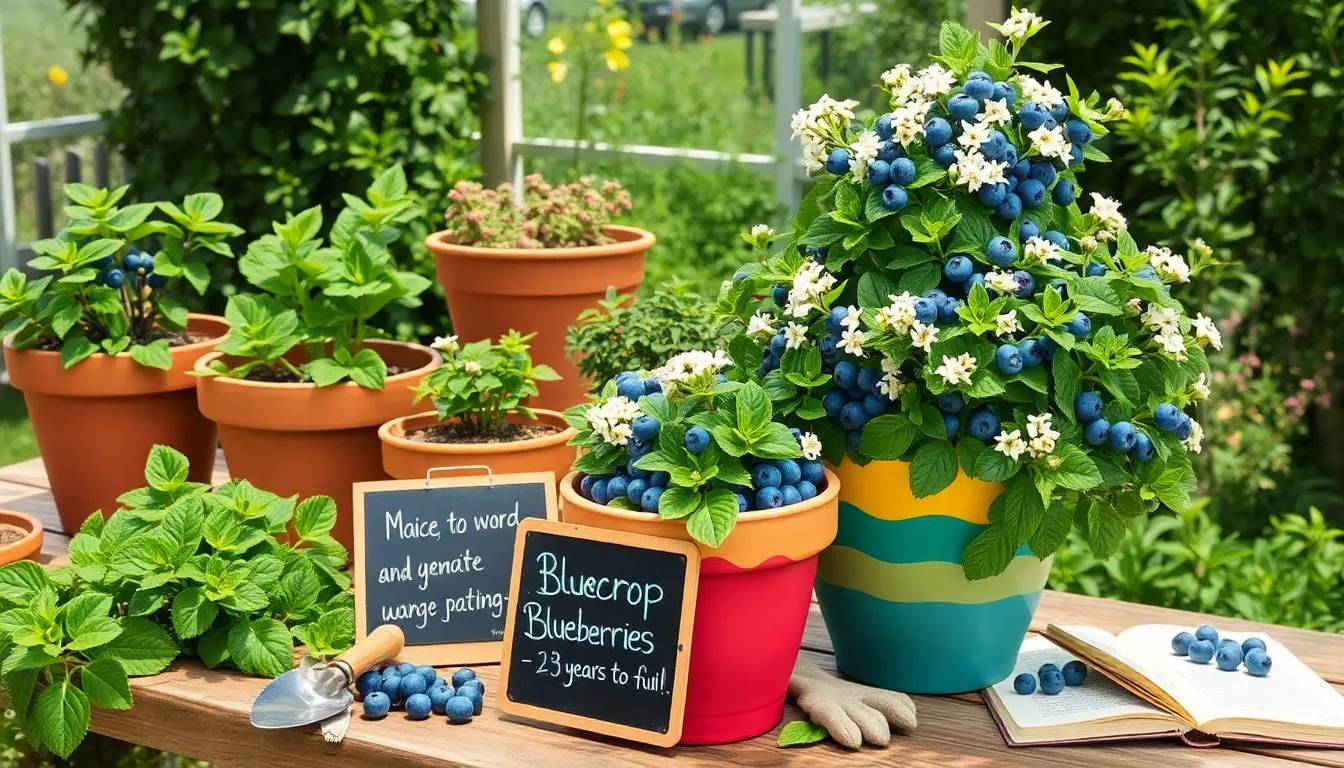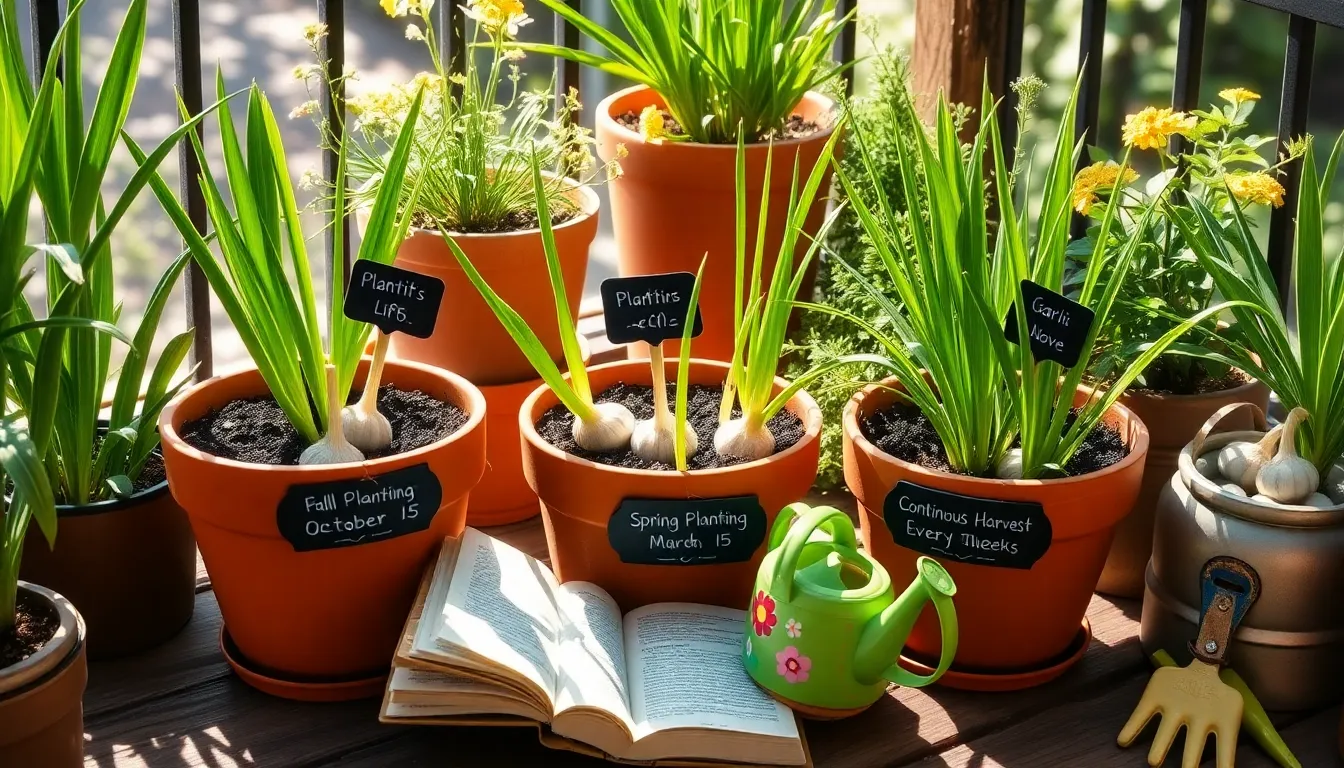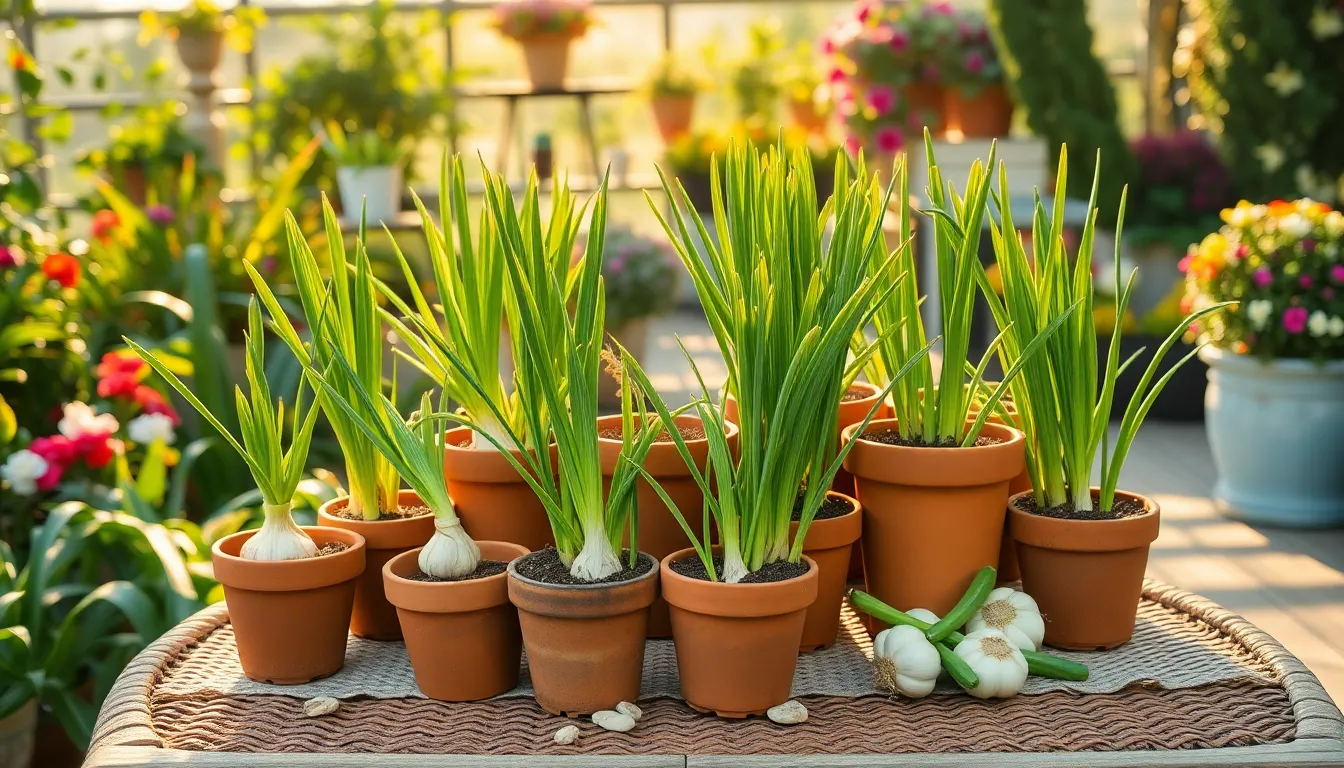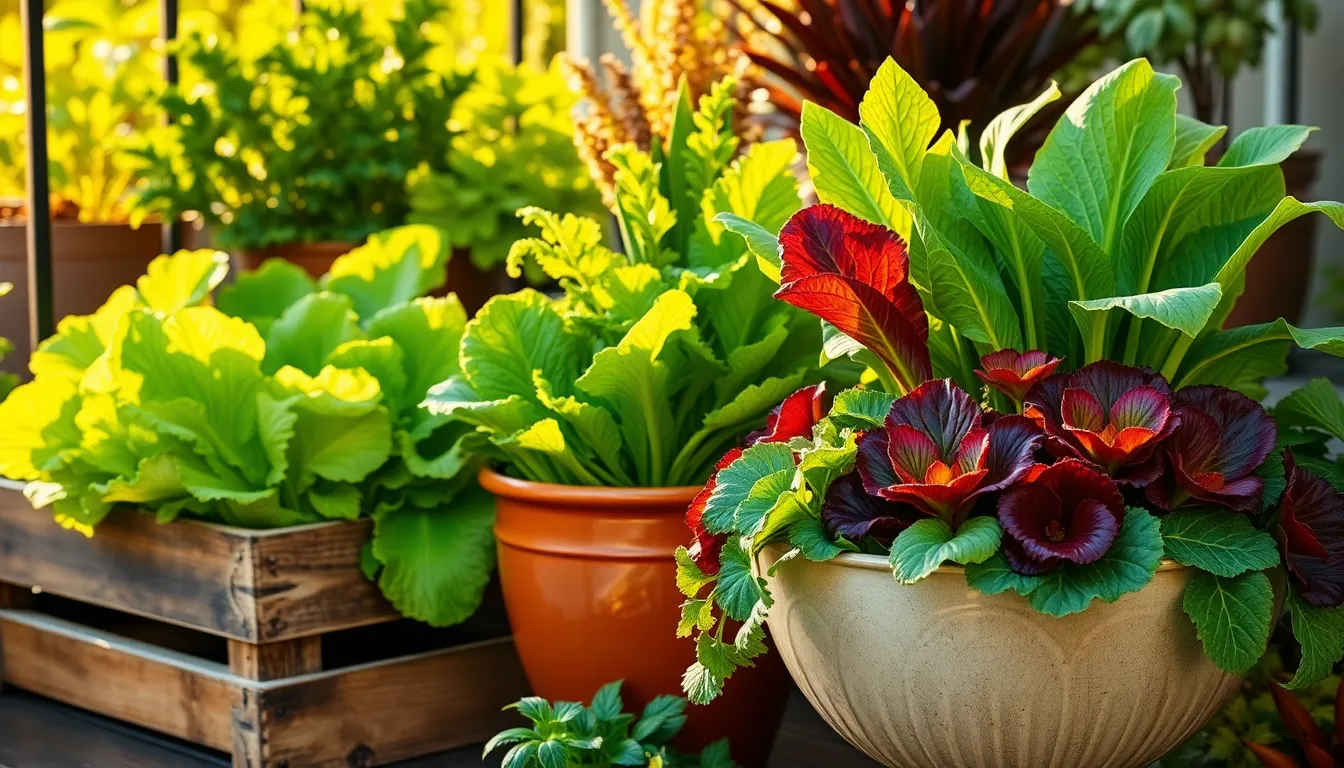For those dreaming of a bountiful blueberry harvest but lacking garden space, growing these berries in pots offers a delightful solution. Whether you’re a novice gardener taking your first plunge into the world of edible plants or a seasoned green thumb exploring container gardening, blueberries can add a burst of color and flavor right to your patio or balcony.
Understanding the timeline for growing blueberries in pots is crucial to setting realistic expectations and maintaining patience as you nurture your plants. In this article, you’ll discover the key factors that influence growth time, from selecting the right variety and pot size to mastering soil conditions and pruning techniques. Embrace this rewarding journey, and you’ll soon be harvesting your own delicious, homegrown blueberries with a sense of accomplishment and joy.
Understanding Blueberry Growth Stages
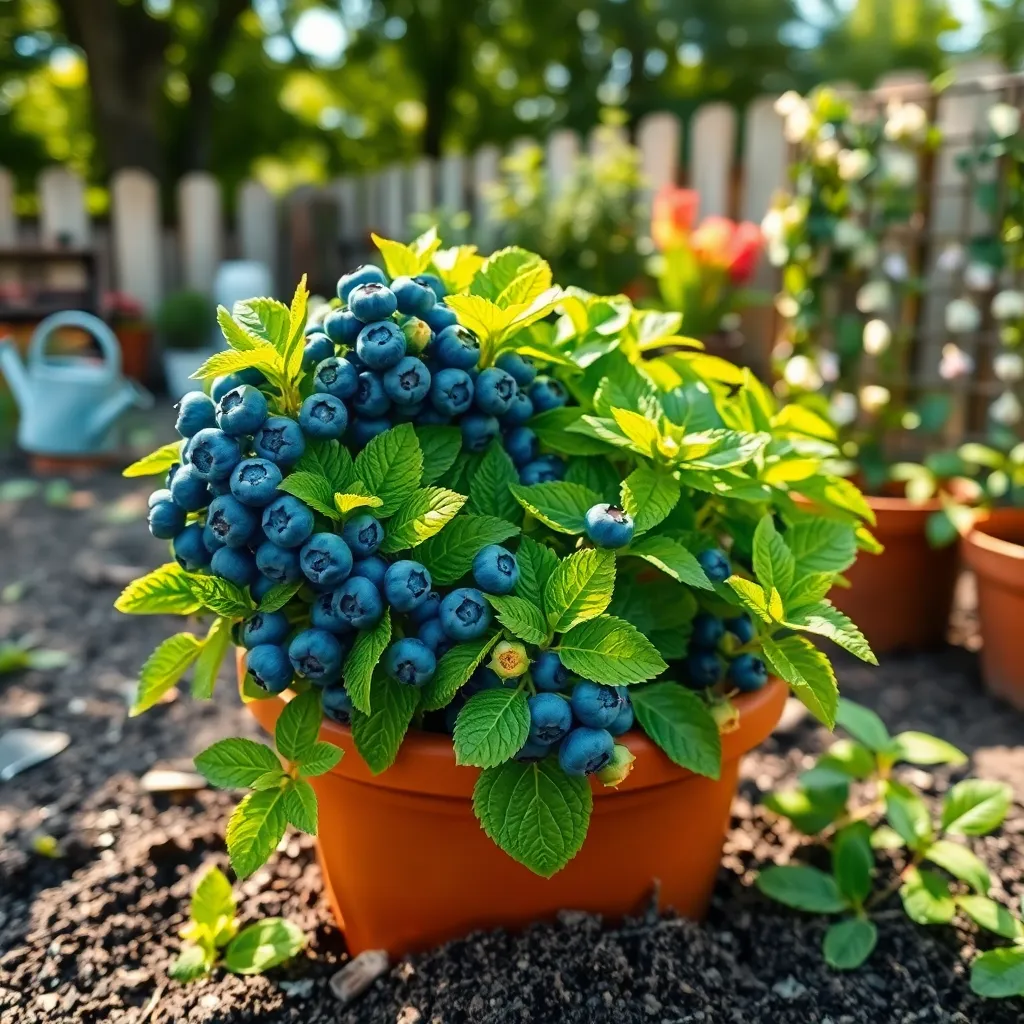
Blueberry plants go through distinct growth stages, each requiring specific care to thrive. Initially, during the **dormant stage**, it’s crucial to provide a well-draining potting mix rich in organic matter to mimic their natural habitat.
As spring approaches, the **bud break stage** begins, characterized by swelling buds. At this point, ensure your plant receives full sun exposure for at least six hours a day to promote healthy leaf growth.
During the **flowering stage**, proper pollination is essential for fruit development. Consider placing your potted blueberries near other blueberry varieties to enhance cross-pollination, which can significantly increase fruit yield.
The final **fruiting stage** sees the development and ripening of berries. Regular watering is crucial now, but be cautious to avoid overwatering; the soil should remain consistently moist yet not soggy.
For advanced care, consider using a fertilizer specifically formulated for acid-loving plants like blueberries. Apply it during the growing season to provide essential nutrients that support vigorous growth and bountiful fruit production.
Choosing the Ideal Pot Size
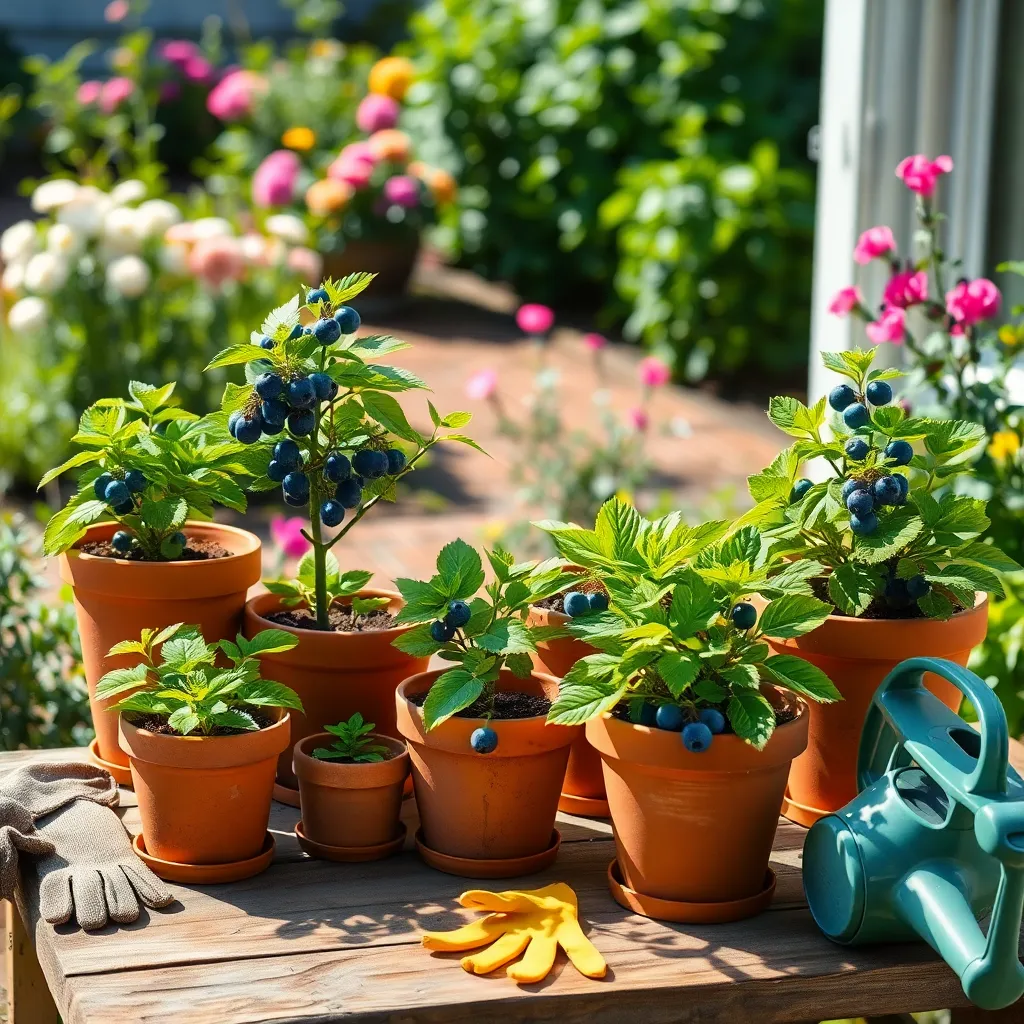
When growing blueberries in pots, selecting the right pot size is crucial for the plant’s health and productivity. A pot that is too small can restrict root growth, while an excessively large pot may lead to overwatering and root rot.
For most blueberry varieties, a container with a minimum diameter of 18 to 24 inches is recommended. This size provides ample space for root development and ensures the plant can access sufficient nutrients and water.
Consider pots made of materials like ceramic or plastic, which help retain moisture better than unglazed clay pots. Make sure the pot has adequate drainage holes to prevent waterlogging, which is a common issue with blueberries.
Advanced gardeners might explore self-watering pots, which can be particularly beneficial in maintaining consistent soil moisture levels. Regular monitoring of soil moisture is essential; water the plant thoroughly when the top inch of soil feels dry to the touch.
Optimal Soil Mix for Blueberries
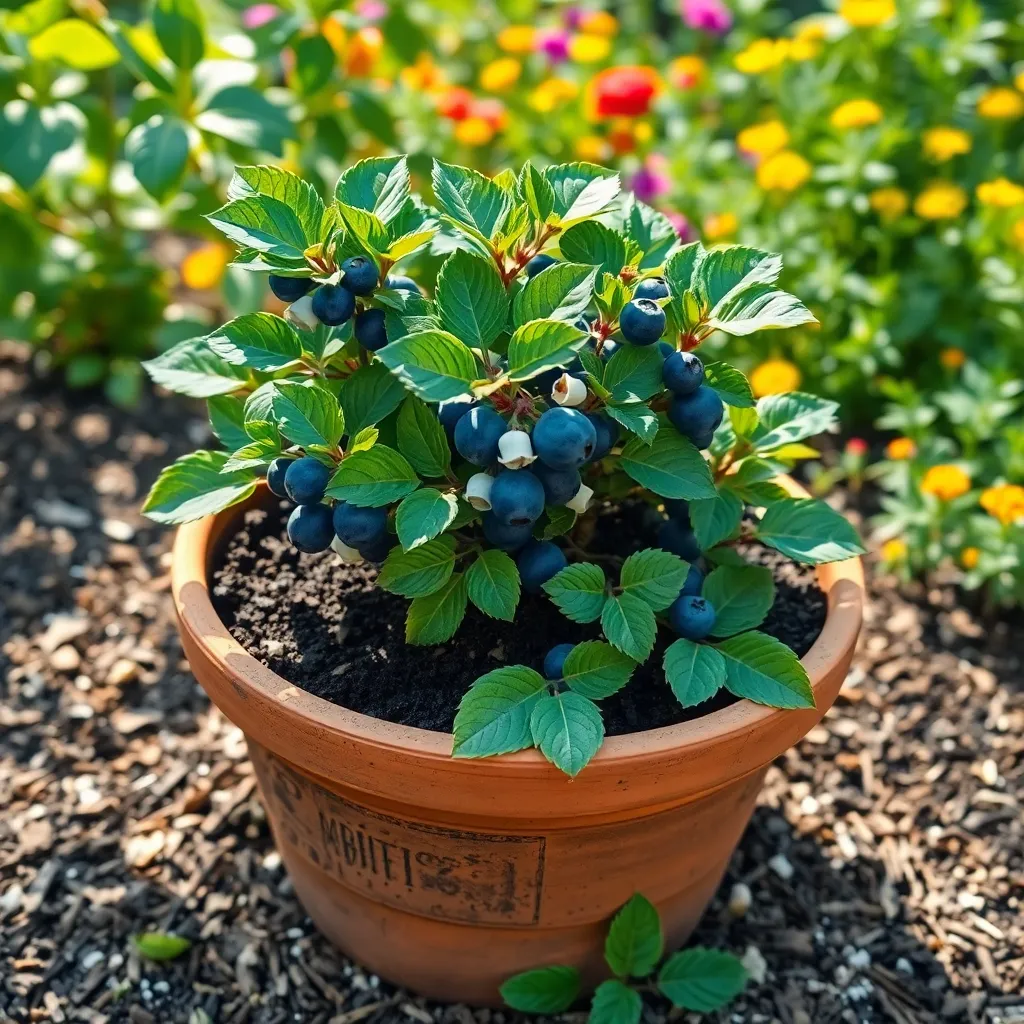
When it comes to growing blueberries in pots, the right soil mix is crucial for plant health and productivity. Blueberries thrive in acidic soils, so it’s essential to use a mix that has a pH of 4.5 to 5.5.
A suitable soil mix for blueberries consists of equal parts sphagnum peat moss, pine bark, and perlite or coarse sand. This combination ensures good drainage while maintaining the necessary acidity levels.
For beginners, an easy option is to purchase a pre-mixed, acidic potting soil specifically formulated for acid-loving plants like azaleas or rhododendrons. Make sure to check the label to ensure the pH level aligns with blueberry requirements.
Advanced gardeners might opt to customize their mix further by adding components like aged compost or sulfur to fine-tune nutrient availability and acidity. Regularly testing the soil’s pH is important, as water and other factors can gradually alter its acidity over time.
Watering and Fertilizing Guidelines
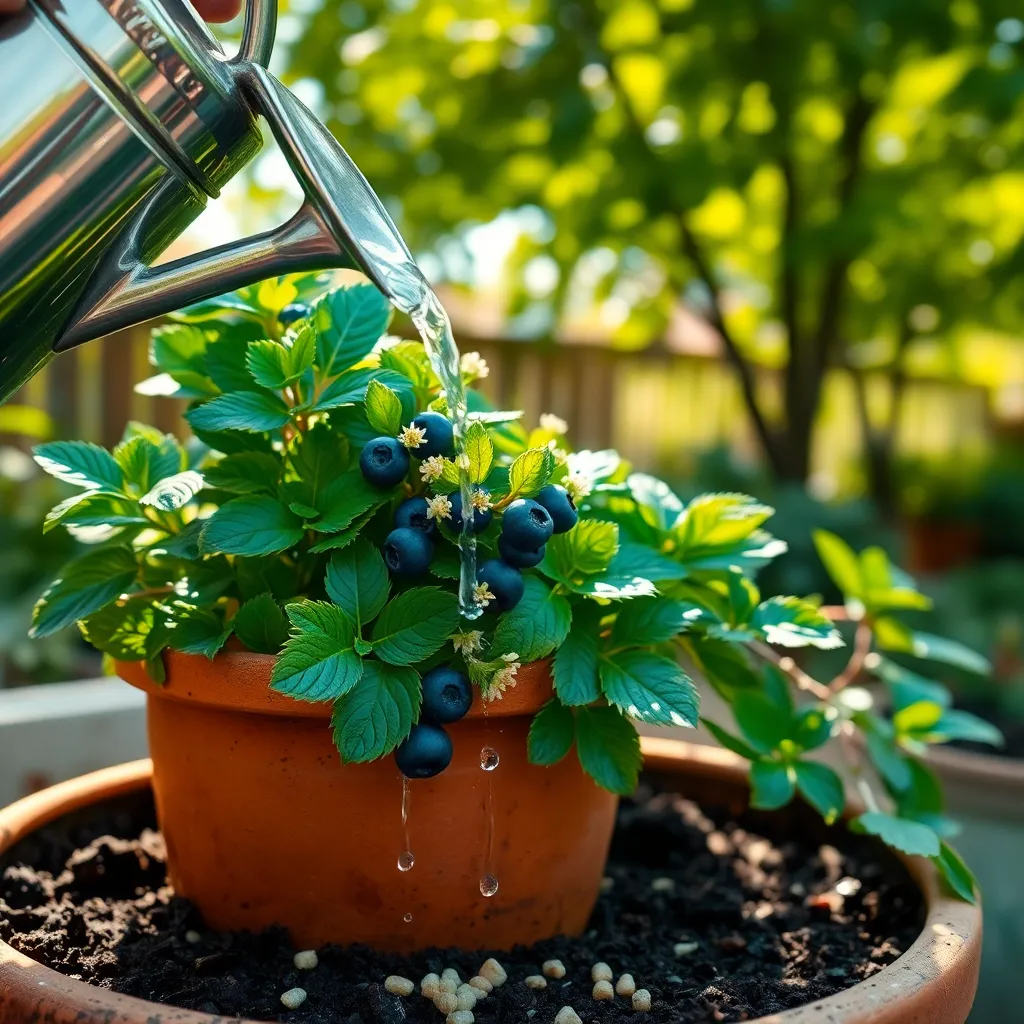
Proper watering is crucial for growing blueberries in pots, and it’s important to keep the soil consistently moist. Water your blueberry plants deeply once or twice a week, depending on weather conditions and the size of your container.
Blueberries prefer slightly acidic soil, so using rainwater or distilled water can help maintain the right pH levels. Avoid using tap water if it’s high in minerals, as this can lead to nutrient imbalances in the soil over time.
Fertilizing blueberries in pots requires careful timing and product selection to ensure healthy growth. Apply a balanced, acid-specific fertilizer in early spring and again in late spring to support leaf and fruit development.
Granular fertilizers can be sprinkled on the soil surface, while liquid fertilizers should be diluted according to package instructions before application. Be sure to water the soil before and after fertilizing to help distribute nutrients evenly and avoid root burn.
For those seeking advanced care, consider using slow-release fertilizers to provide a steady nutrient supply over the growing season. Monitor your plants for signs of nutrient deficiencies, such as yellowing leaves, and adjust your fertilization routine accordingly.
Here are some practical tips to ensure successful watering and fertilizing for your potted blueberries:
- Mulch the soil surface with pine bark or needles to retain moisture and maintain acidity.
- Check soil moisture regularly by sticking your finger about an inch into the soil; water if it feels dry.
- Use a fertilizer formulated for acid-loving plants to prevent nutrient lockout.
Expected Timeline for Harvest
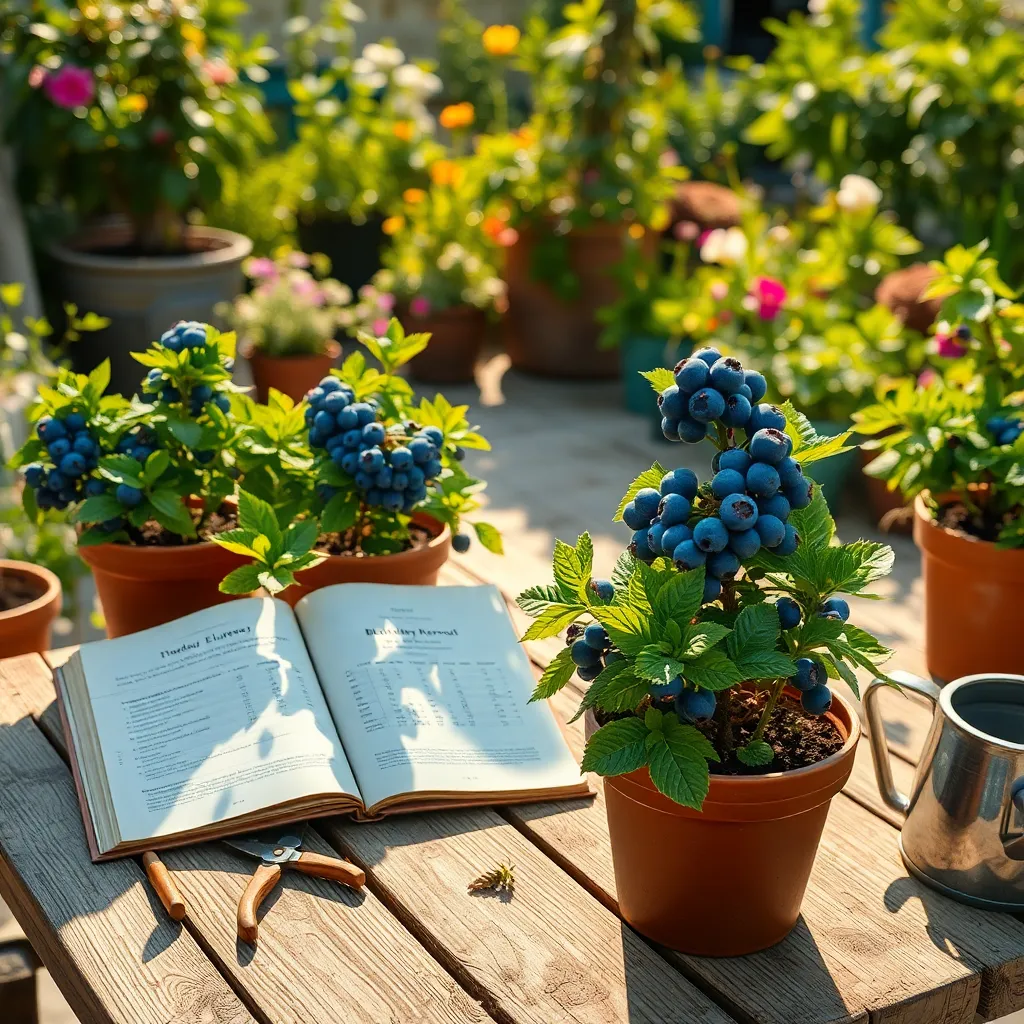
The timeline for harvesting blueberries in pots can vary, but generally, you can expect your first substantial crop in the third year after planting. It’s important to be patient, as the plant needs to establish itself before producing a generous yield.
During the first two years, focus on nurturing your blueberry plant by ensuring it has the right soil and conditions to thrive. Blueberries thrive in acidic soil with a pH between 4.5 and 5.5, so using an ericaceous potting mix is crucial.
In terms of sunlight, blueberries require full sun for at least six hours a day to ensure optimal growth and fruit production. If possible, place your pot in a location that receives morning sun and afternoon shade to protect the plant from excessive heat.
Once the plant is mature enough, usually in the third year, expect a harvest period that lasts several weeks. Harvesting can typically begin in early to mid-summer, depending on your climate and the variety of blueberry.
Pick blueberries when they are fully ripe, which is when they have turned a deep blue color and are slightly soft to the touch. To ensure continuous production, regularly check your plants and pick ripe berries every few days during the harvest season.
For advanced gardeners, consider staggering the planting of different blueberry varieties to extend your harvest period. This technique can help you enjoy fresh blueberries from early summer to late summer, maximizing your yield.
Conclusion: Growing Success with These Plants
In exploring the nurturing parallels between growing blueberries in pots and cultivating healthy relationships, we’ve delved into key concepts: patience, nurturing, adaptability, communication, and commitment. Just as blueberries require time and dedication to thrive, relationships flourish with consistent effort and care. Patience allows the relationship to develop at its own pace, nurturing ensures both partners feel valued, adaptability helps weather changes, communication fosters understanding, and commitment builds a strong foundation.
As an actionable step, consider dedicating time this week to check in with your partner, much like tending to a budding plant. Discuss your relationship’s “growth” and identify areas that may need more “watering” or “sunshine.”
Remember to save or bookmark this article for ongoing inspiration and guidance as you nurture your relationship garden. It serves as a gentle reminder of the fundamental principles that support thriving partnerships.
By embracing these timeless concepts, you’re investing in a future where your relationship can succeed and bear the sweetest fruit. Let’s cultivate a world where every relationship blossoms with love and understanding. Keep this guide close as you continue your journey toward a flourishing partnership.

